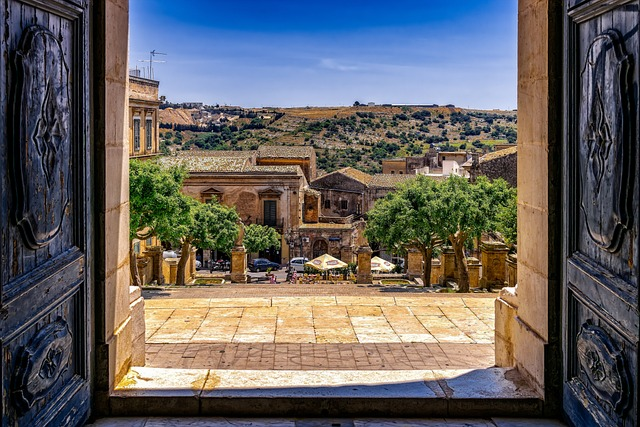Get ready to explore Sicily’s rich history and culture through these must-see landmarks and historic sites!
Sicily’s beauty lies not only in its natural landscapes. But also in its wealth of ancient ruins and sites, making it a prime destination for historical tourism.
Some of Sicily’s famous landmarks include the Valley of the Temples in Agrigento, and the Necropolis of Pantalica, among other historic sites. These ancient ruins in Sicily will take you through its colorful past.
The other must-visit sites and landmarks in Sicily: are stunning cathedrals, churches, palaces, and the breathtaking views of Mount Etna, to name a few. So just stick around, there’s more!
Related Blogs:
- Ultimate 14-Day Sicily Itinerary
- Top Places for Honeymoon in Sicily
- Map of Sicily: How to Get Around Sicily
- Underrated Cultural Events in Sicily
- The Best Resort Guide: Where to Stay in Sicily
Must-See Historical Sites in Sicily, Italy
1. Arab-Norman Palermo and the Cathedral Churches of Cefalú and Monreale
This UNESCO World Heritage Site comprises nine structures (2 palaces, 3 cathedrals, 3 churches, and a bridge) spread out over Cefalù, Monreale, and Palermo.
The Norman Palace
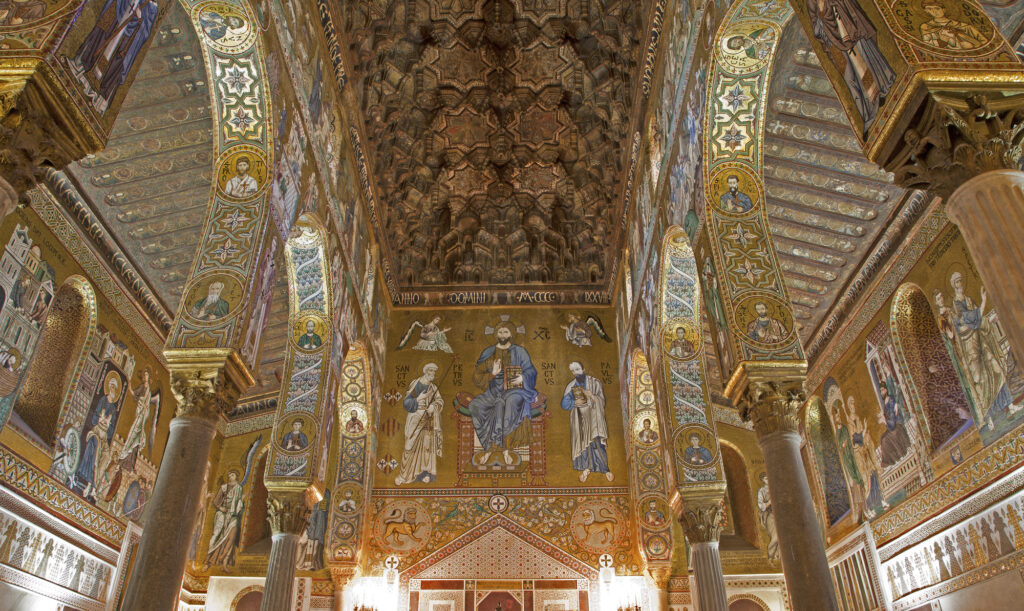
Palazzo dei Normanni served as the seat of power for past rulers of Sicily. It’s the seat of the Sicilian Regional Assembly since 1946.
Norman Palace is home to several important artworks, including the Palatine Chapel which showcases excellent Byzantine mosaics.
Palazzo della Zisa
The 12th-century palace was the summer residence of the Norman kings of Sicily, known for its stucco, floral motifs, and Islamic-inspired gardens.
Monreale Cathedral
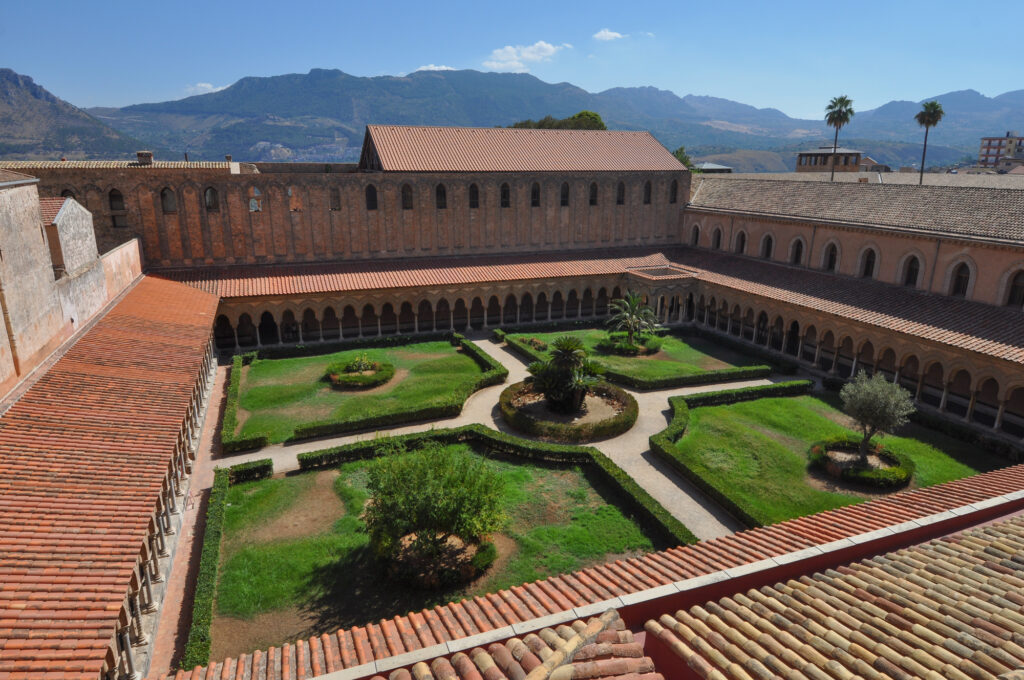
Monreale Cathedral is known for its exquisite Byzantine-influenced mosaics that cover the entire interior, depicting biblical scenes and figures. The cathedral’s treasury contains precious artworks, including a gold and silver reliquary of the Holy Cross. It’s where William II of Sicily, and other members of the Norman royal family were buried.
Cefalù Cathedral
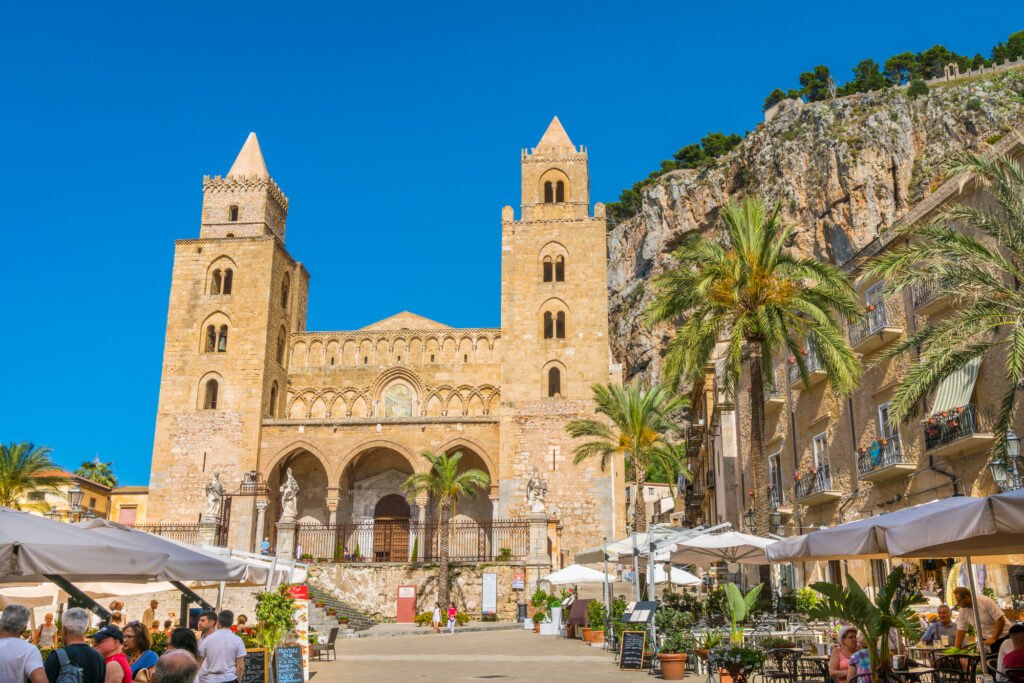
The cathedralis known for its stunning exterior and interior decorations. Its intricate mosaics depict scenes from the life of Christ. Its treasury keeps the silver-gilt cross reliquary, the gold and enamel bust of Michael the Archangel, liturgical vests, ivory carvings, etc. The cathedral was damaged in the 1968 earthquake but has since been restored
Palermo Cathedral
Palermo Cathedral is famous for its beautiful mosaics that depict scenes from the Old Testament and the life of Mary and other saints. The cathedral is also the burial site for Roger II, the first king of Sicily. And of Emperor Frederick II, King of Sicily and Emperor of Rome.
Frederick II became King of Sicily at age three and ruled until his death in 1250. Frederick II made Sicily a center of learning and culture. He centralized the government, improved the legal system, and promoted economic development.
Church of San Cataldo
The Church is noted for its distinctive features: the trio of red domes on the roof, each with a small tower. These domes show the multicultural influences in Sicily during that period. Those interested in medieval architecture and cultural history will find the church worth a visit.
Church of Santa Maria dell’Ammiraglio
This historic church is a three-aisled basilica with a central dome. The walls and ceilings are decorated with mosaics, including the large mosaic of the Virgin Mary and Child in the apse.
Church of San Giovanni degli Eremiti
Founded by Roger II, the Church was dedicated to St. John the Evangelist. Its five domes are said to represent the five wounds of Christ. The church is a combination of Islamic and Romanesque architecture.
Admiral’s Bridge
This 12th century bridge is made of limestone and decorated with arches and columns. It was built in 1131 to connect the city of Palermo to the gardens on the other side of the Oreto river.
These nine structures collectively make up the Arab-Norman Palermo and the Cathedral Churches of Cefalù and Monreale. Each represents the Arab-Norman architectural and artistic heritage of Sicily and its historical significance in the Mediterranean region.
2. Syracuse and the Rocky Necropolis of Pantalica
Syracuse is on the Ionian Sea coast and is considered the greatest Greek city in Sicily. The historic city and the nearby rock necropolis of Pantalica make this UNESCO World Heritage Site a worthy destination for visitors interested in history and culture.
The Archaeological Site of Syracuse
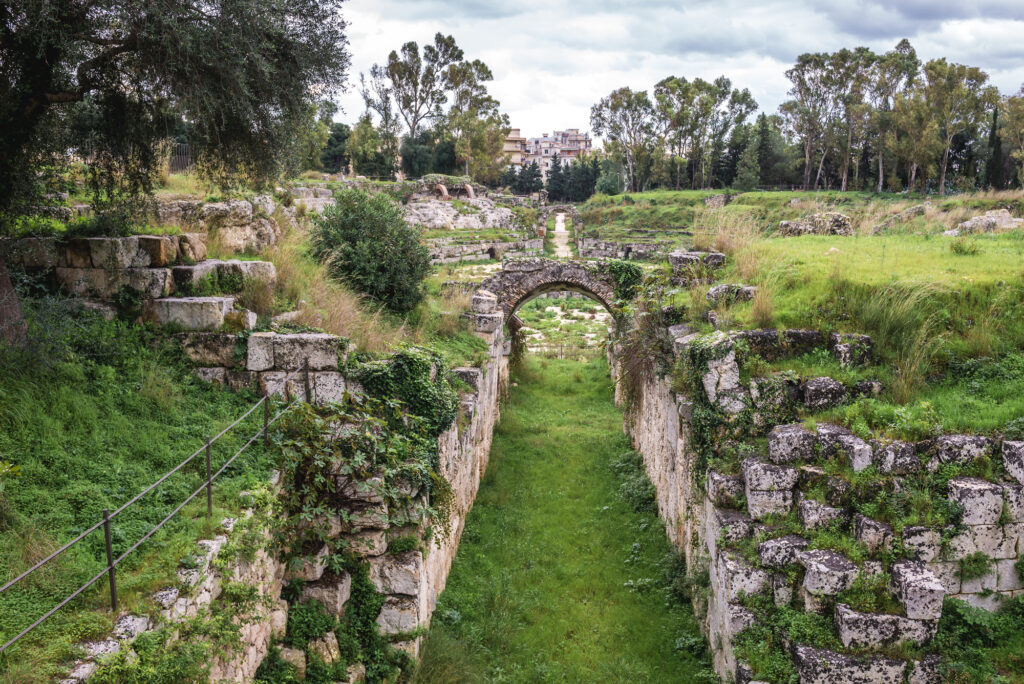
The Neapolis Archaeological Park of Siracusa is home to the remains of ancient Syracuse, including the ruins of the Altar of Hieron II. One of the most visited historic sites in the city, the park is divided into three main sections:
•The Greek theatre is a well-preserved 5th-century BC theater in Ortygia. It’s still used today for performances and events. It’s one of the largest ancient theatres in the world that can seat up to 16,000 people.
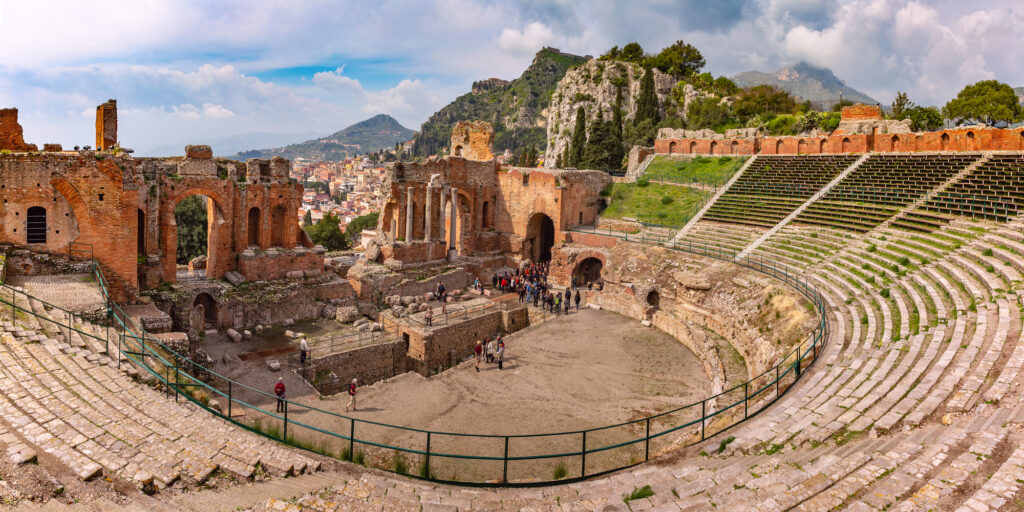
•The 3rd century AD Roman Amphitheatre was used for gladiatorial contests and other public spectacles.
•The latomie (stone quarries) are 3 deep limestone quarries. They were a source of building materials the ancient Greeks used to build theaters and other monuments.
The quarries are known for their impressive rock formations, including the Ear of Dionysius. Nowadays, the quarries are closed except for the Ear of Dionysius, which is a limestone, ear-shaped cave turned prison by the tyrant Dionysius, where he’d eavesdrop on his prisoners’ conversations from the top of the cave.
The Necropolis of Pantalica
The necropolis of Pantalica is an archaeological site inside the Riserva Naturale Orientata Pantalica, which is a nature reserve known for its natural caves. The necropolis (cemetery) consists of some 4,000 cave tombs carved in natural rock.
The Anaktoron (the prince’s palace in Greek) is a megalithic building on the hills of Pantalica. It’s made of large blocks of limestone, which was damaged by weathering and earthquakes over the centuries. But the ruins remain an important archaeological site and prove the Mycenaean presence in Sicily. It’s accessible by a short hike from the village of Pantalica.
3. Villa Romana del Casale
Villa Romana del Casale is also a UNESCO World Heritage Site inscribed in 1997. The 4th-century villa is the perfect example of beautifully preserved Roman mosaics. It’s a 40-room villa that sits on a 3,000-square-meter-wide estate. The Roman mosaics depict scenes of daily life, including hunting and mythological scenes.
How to get to Villa Romana del Casale?
•From Piazza Armerina, you can drive to Villa Romana del Casale and park in the nearby parking lot.
•Take a shuttle bus or taxi. Buses run regularly from Piazza Armerina to the site, on a 10-15 minute journey.
•Or join guided tours that include transportation to and from the villa. This option is convenient if you prefer a knowledgeable guide to show you around the site.
4. Mount Etna
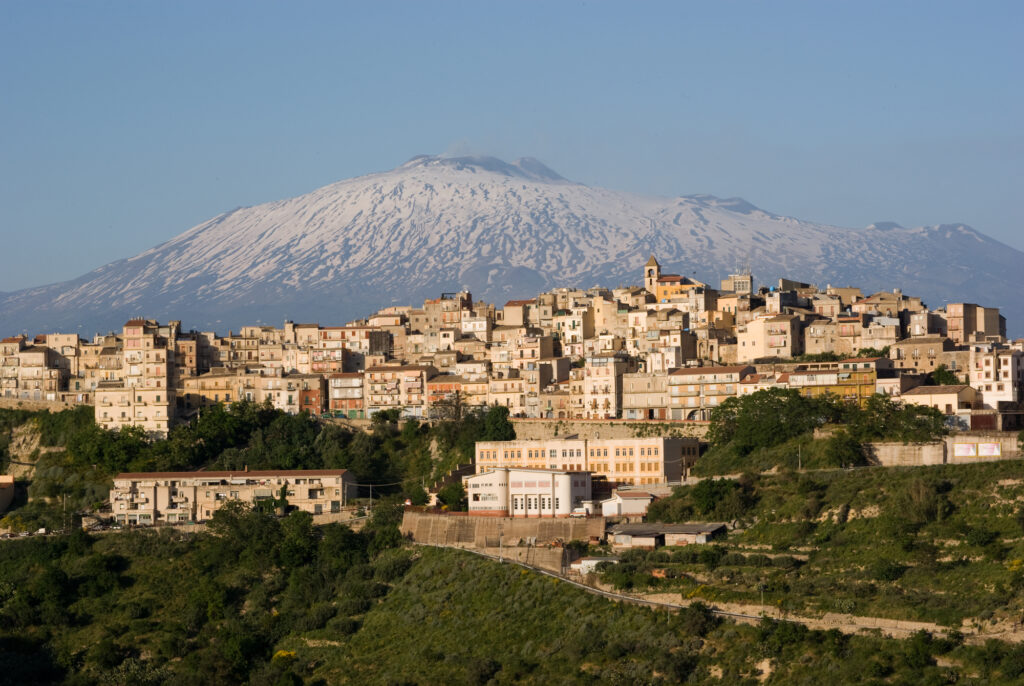
The highest volcano in Italy, Mount Etna inspires artists, poets, and writers. It’s one of the most visited Unesco heritage sites, where you can hike, climb, and ski on the volcano.
Mount Etna is recognized for its persistent volcanic activity. It’s been erupting consistently over the centuries. Despite its continuous eruptions, people have built homes, farms, and businesses on the slopes of Mount Etna.
One of the best-studied volcanoes in the world, Mount Etna is a valuable scientific resource. Its eruptions provide data for scientists studying volcanology.
The Etna Museum in Nicolosi holds interactive exhibits and keeps varied collections of photos, geological samples, scientific journals, and videos.
5. Late Baroque Towns of the Val di Noto

The region was destroyed by the 1693 Sicily earthquake. The Late Baroque Towns of the Val di Noto are the result of a successful urban planning and architectural style that reflects the cultural and artistic influences of the time.
It comprises eight towns: Caltagirone, Militello Val di Catania, Catania, Modica, Noto, Palazzolo, Ragusa, and Scicli, which are known for their ornate facades and balconies.
Val di Noto is a beautiful region with lots of activities and attractions to explore. Enjoy wine and local food tasting while taking in the beautiful scenery of its vineyard-covered hills.
Or take a guided tour to explore the stunning Baroque architecture of Noto.
Ragusa is a nice hub when visiting the Val di Noto. It has lots of great restaurants and things to do.
6. Archaeological Area of Agrigento
Agrigento is home to one of Italy’s most famous Unesco world heritage sites. A sacred area along this ridge has been excavated to reveal Agrigento’s most famous remains.
The Valley of the Temples
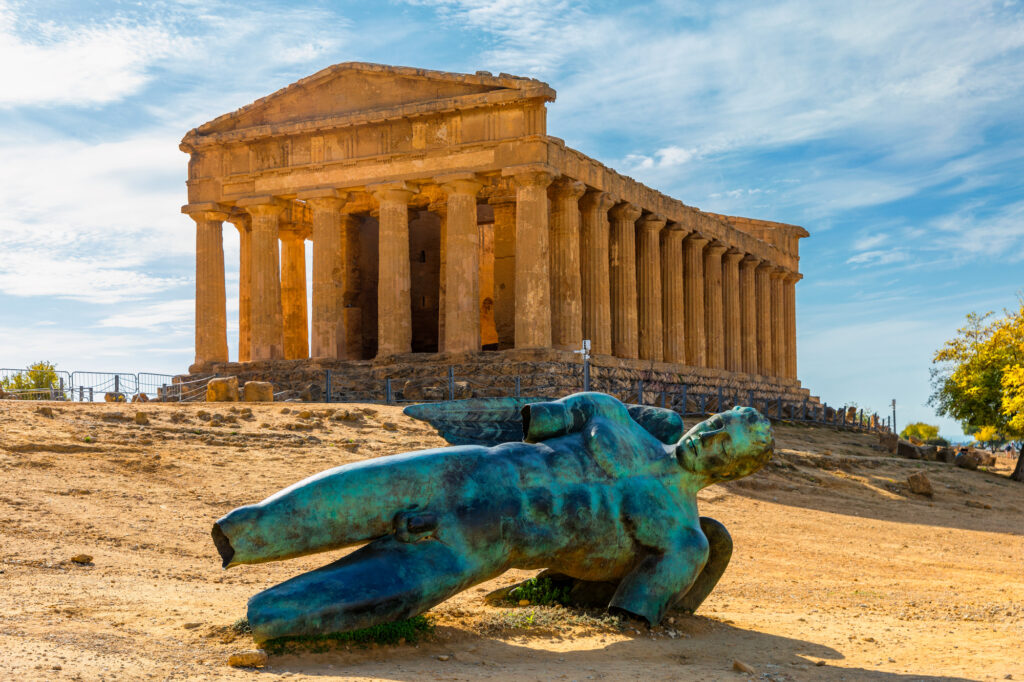
Vallei de Templi is a 13-hectare archaeological park located on a ridge outside the city. The park was founded to protect the landscape and historical heritage of the site and to promote its cultural and tourist potential.
It includes the ruins of the ancient city of Akragas and the eight temples dedicated to various gods and goddesses, including the ancient temple of Heracles, the Doric Temple of Concordia, the Temple of Demeter, the Temple of Juno, the Temple of Olympian Zeus, among others. It’s one of the most outstanding examples of ancient Greek art and architecture.
Modern Agrigento
The modern-day Agrigento has a lot of modern buildings – the ones in the city center, the Agrigento Centrale (train station), elevated roadways, etc. Behind its sprawling ancient ruins, Agrigento still retains a few buildings built in the medieval and Baroque styles.
7. Aeolian Islands
The Aeolian Islands are a volcanic archipelago in the Tyrrhenian Sea, off the northern coast of Sicily in Italy. They’re a UNESCO World Heritage Site that consists of smaller, uninhabited islets, and 7 major islands:
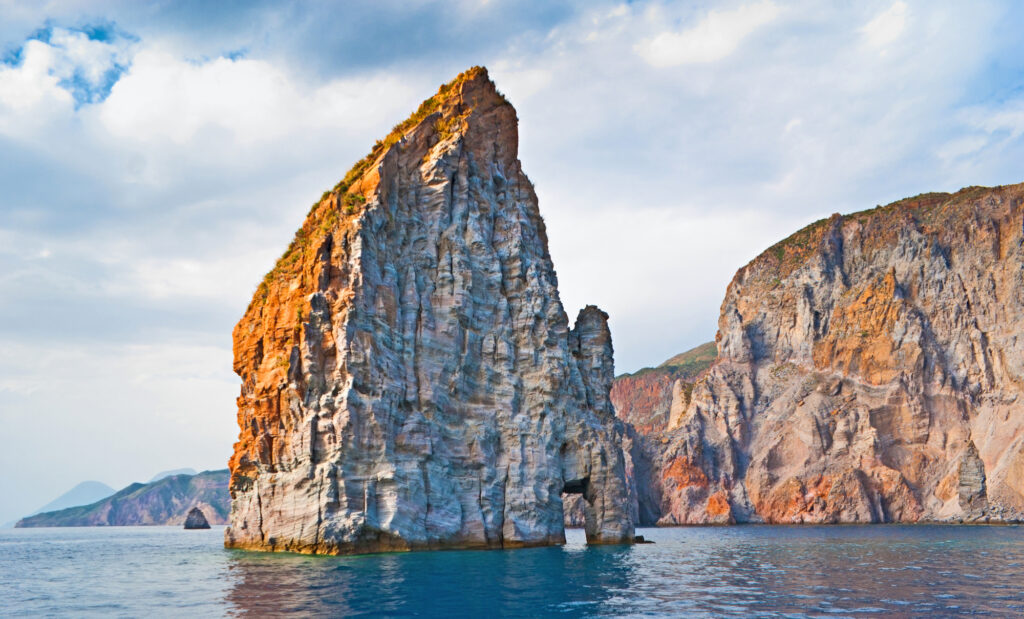
Lipari is home to Lipari Castle (one of the best-preserved museum complexes in the Mediterranean), the Cathedral of St. Bartholomew, pumice stone quarries, and beaches.
Salina Island has crystalline waters at the bottom of limestone cliffs. It’s known for two special products: capers and Malvasia sweet wine. It’s also known for its greenery and is the only island in the archipelago with freshwater springs.
Stromboli is a chilled-out island. The volcano has an elevation of 926 m above sea level. Fluid lava still flows from its crater to the sea, although its last serious eruption was on April 13, 2009. The island is also known for its black sand beaches, and for producing dates, olives, and fruits.
Vulcano is known for its several volcanic calderas. You can hike up the crater to enjoy a panoramic view of the island. It’s home to dark, volcanic sand beaches with clear waters. Vulcano also offers mud baths.
Alicudi is the least developed island and is known for its rugged landscape and lack of roads. Its deep waters are suitable for diving. The island is popular with hikers and nature lovers.
Filicudi is known for its crystal-clear waters and underwater caves, which are popular with divers. The island also has a prehistoric village that can be visited.
Panarea is known for its nightlife and luxury hotels. The island has a small port and a historic center with white-washed houses and narrow streets.
8. Ancient Ruins and Archaeological Wonders in Sicily
Historical tourism in Sicily is further enriched by the lesser-known yet equally historically significant destinations such as:
Palazzo Conte Federico
The palace is home to numerous art treasures, including paintings by Caravaggio, sculptures, and furniture. It’s still owned by the Conte Federico family, who have lived there for centuries. The family offers guided tours.
The palace is within walking distance of the Norman Palace, and the Ballarò market in Palermo. The 16th-century palace was (possibly) named after one of the descendants of Emperor Frederick II. Although there’s still no proof to support this claim.
Fontana Pretoria

The fountain was made of white marble and ornately designed, the fountain has three basins, each decorated with statues of gods, goddesses, nymphs, and other mythological figures. The central basin is topped by a statue of the Genio di Palermo, the protective deity of the city.
The fountain’s overt sensuality (some of the statues are nude) offended some people. And for some time it was called the Fountain of Shame. Despite that controversy, Fontana Pretoria has become a popular tourist attraction in Palermo.
The Capuchin Catacombs of Palermo

They’re a series of underground burial sites that contain the mummified remains of over 8,000 Capuchin friars and laymen. The bodies were mummified naturally by the dry air of the catacombs. Today, they provide a somewhat macabre historical attraction and a reminder of the fragility of life.
Tempio di Segesta
The 5th-century BC Doric Temple of Segesta in Sicily is situated on a hilltop with picturesque views of the surrounding countryside. Its construction was never finished, but it still showcases exquisite Greek Doric architecture, including well-preserved columns. The temple reflects the influence of Greek culture on Sicily and is a popular tourist attraction today.
The (remnants) Greek theater nearby commands a spectacular view of the Gulf of Castellammare. It has a seating capacity of around 4000.
Corso Umberto
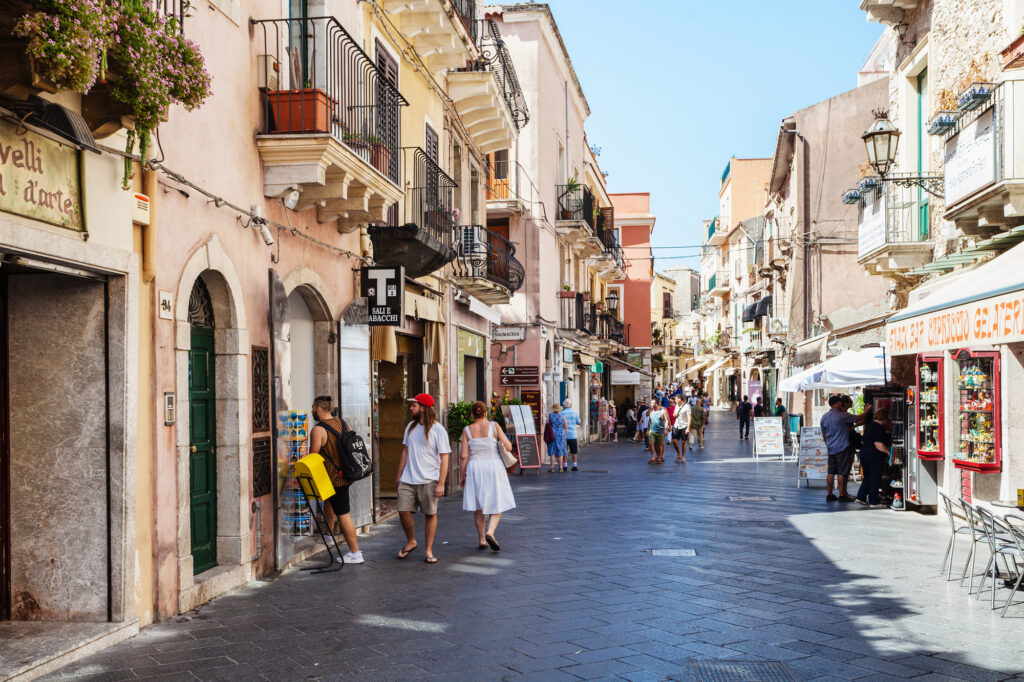
Corso Umberto is the main street in the picturesque town of Taormina, It’s a charming car-free street lined with shops, restaurants, cafes, and historic buildings. From here you’ll get a glimpse of the majestic Mount Etna.
You can walk down the street through the Palazzo Corvaja, a medieval palace with stunning views of the town. Or watch a show at the Teatro Antico, an ancient Greek theater that’s still used for performances today.
Gela
Gela’s ancient remains include a 5th-century temple of Athena, citadels, and Greek ruins. The Gela Archaeological Museum houses varied collections of Greek vases and other artifacts found in the area.
The town also offers scenic views of the Mediterranean Sea, and beautiful beaches along its coastline, making it a popular destination for sunbathing and swimming during the summer months.
Himera
Himera is positioned near the mouth of the Himera River, which plays a fundamental role in the city’s development and agricultural activities. Its archaeological site contains remains of Greek temples, fortifications, and other structures.
Practical travel tips when planning a trip to Sicily

Learn some basic Italian phrases and their culture before you go. There’s appreciation among the locals when you put an effort into learning their language and customs. This will help you avoid any cultural shock or scams.
Allow plenty of time to travel between destinations. Sicily is a large island, so it can take some time to get around.
Italy is part of the EU. Most citizens of EU countries don’t need a visa to enter. Italy (Sicily) uses the euro as currency.
Best time to visit? Ideally from April to June or September to October.
Transportation options

The main international airport in Sicily is Catania-Fontanarossa Airport and Palermo Airport. You’ll find direct flights from major European cities.
The train is a good option for getting around a destination quickly and affordably. The train network covers most of the major cities and towns.
Buses are also affordable. They’re slower than trains, but more convenient if you’re traveling to smaller towns or villages.
Renting a car is a good option if you want to have more flexibility and explore a place at your own pace. But it’s expensive.
A taxi is a convenient way to get around major cities, especially if there’s no parking allowed. But it’d cost you money.
Accommodation options
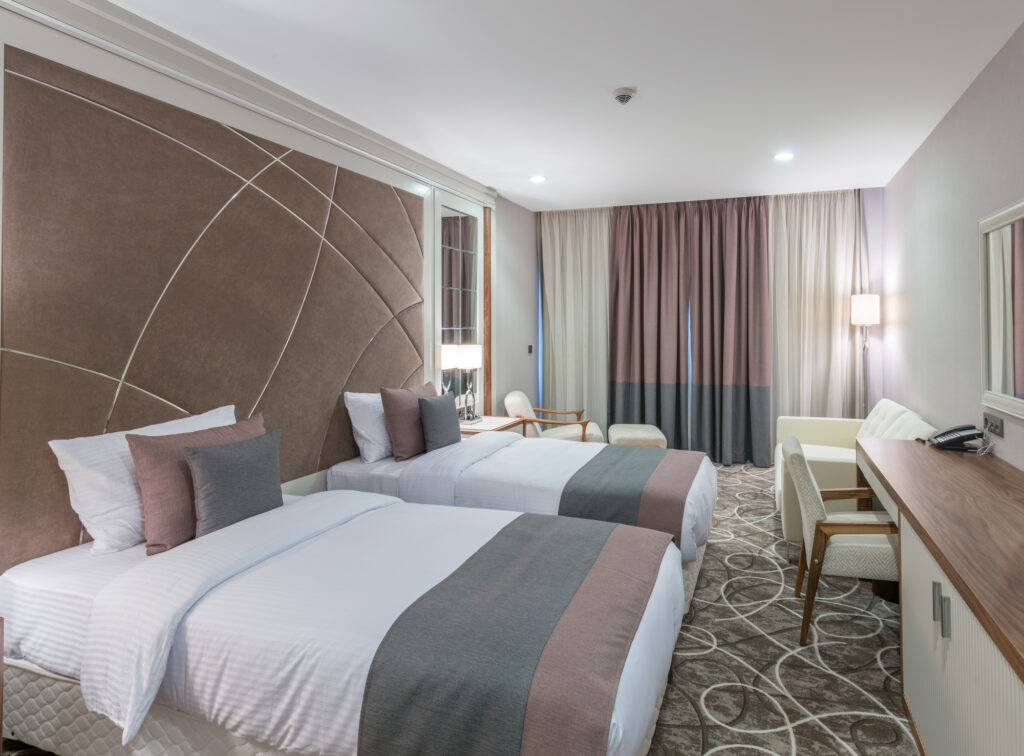
Hotels range from family-run budget hotels to luxurious international hotel chains.
B&Bs are a good option for budget travelers. They offer a more personal experience and there’s a chance to meet other travelers.
Booking.com is a popular option for finding short-term rentals. It’s nice to experience local life and get a more authentic taste of Sicily.
Guided tours in Sicily cover everything from historical tours to food tours. It’s a great way to learn about the place and its culture.
Takeaway:
The historic sites of Sicily invite us to join an exciting journey through time. From the grandeur of ancient Greek and Doric temples to the intricate beauty of Baroque palaces, Sicily’s past will forever be remembered through its architectural marvels and archaeological treasures.
Italy was part of the Roman Empire for 6 centuries, and the Greeks for about 700 years. No wonder there’s a Roman amphitheater here and there. Greek temples, ruins, and monuments have become their legacy.
These sites are more than just monuments. They tell us how turbulent and diverse Sicily’s history is. And as we leave these hallowed grounds, we’re in awe of the enduring spirit of Sicily and its people.

